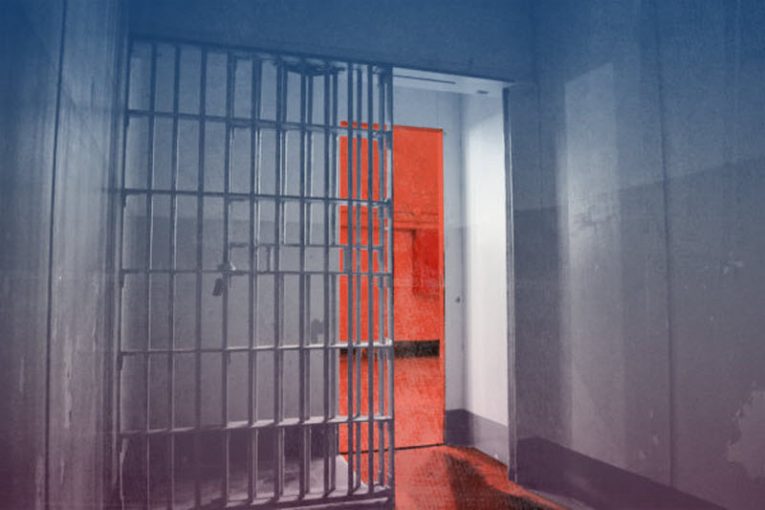

By Annie Rudolph, Gabi Rose and Jessi Dannenberg
IRVINE, CA – This March, the National Registry of Exonerations published a 2023 annual report outlining the 153 exonerations that occurred last year, as well as the trends and patterns among these cases, recording 3,478 exonerations in the U.S. from 1989 through the end of 2023.
The Registry’s recorded 153 exonerations were an average figure for the past decade, excluding an abnormal peak of 250 exonerations in 2022. The report states that the number of exonerations since 1989 shows a relatively consistent increase and that peaks and valleys can be attributed to drug crime exonerations, which have been convicted in large clusters in certain years.
In 2022, drug crime exonerations made up 105 of the wrongfully convicted cases and explain the unusually high number of total exonerations, said the Registry.
Out of the 153 exonerees in 2023, the report’s findings on race and wrongful convictions state almost 84 percent were people of color, and 61 percent of the exonerees were Black.
No-crime cases accounted for 30 percent of the total, and these cases involved a disproportionate number of female exonerees, with women representing 15 percent of no-crime cases and only six percent of total cases.
The Registry highlights professional exonerators as playing a key role in many cases, identifying them as responsible for 63 percent of exonerations. Professional exonerators include Innocence Organizations and Conviction Integrity Units, which took part in 67 and 60 exonerations respectively.
The report identifies several crimes and contributing factors involved in the 153 exonerations which occurred in 2023. The main crime was homicide, which accounted for 88 of the exonerees—86 of the defendants charged with murder and two for manslaughter. Those exonerated of sex crimes constituted 17 of the cases, 10 involving sexual assault of an adult and seven involving sexual abuse of a child.
The report listed other violent crimes such as robbery, assault, and attempted murder made up 23 of the total exonerations, and non-violent crimes accounted for 25 of the total exonerations which was a drastic decline from 2022. Lastly, two misdemeanor cases were exonerated in 2023.
The report outlines the contributing factors that resulted in 153 wrongful convictions. Most significantly, official misconduct occurred in 118 exonerations, 116 exonerations included perjury or other false accusations, and 59 exonerations involved ineffective assistance of counsel.
Mistaken witness identification occurred in 50 exonerations, 43 cases involved forensic evidence that was false or misleading, and 32 cases involved false confessions.
Evaluating exonerations by jurisdiction, the Registry examined exonerations across 32 states and determined Illinois to have the most exonerations (24), with Texas (22) and New York (21) close behind.
The exonerations by jurisdiction, the report noted, show areas with high concentration such as Pennsylvania, the fourth highest state, where all but one of the cases were from Philadelphia. Fifty-four percent of exonerations occurred in these top four states and there were no exonerations prosecuted in federal court.
The Registry published eight cases, representing 471 individuals, where the exonerations share a theme of systematic official misconduct that occurred either by a legal actor or in an aspect of the investigation or prosecution.
The Report highlights five individuals who were exonerated in 2023 and whose cases are “remarkable accounts of persistence and determination in the face of injustice” (National Registry of Exonerations).
The report tells the story of Glynn Simmons who was convicted of murder in Oklahoma in 1975. He was convicted and sentenced to death for a shooting which the report details involved Mistaken Witness ID, Perjury or False Accusation, Official Misconduct, and Inadequate Legal Defense all contributed to this wrongful conviction.
An ongoing investigation exposed documents that proved the actual perpetrators were identified at the time of the crime which was never shown to the defense. Originally, Simmons’ death sentence was reduced to life without parole before being exonerated in September of 2023 which made his time served longer than any other exoneree in U.S. History. Simmons spent 48 years, one month and 18 days behind bars.
Another example in the report is the story of Bruce Murray who was wrongly convicted in Philadelphia of murder in 1980. The report details false accusations by co-defendants and the state’s failure to turn over exculpatory evidence at trial which Murray used for over 40 years in his fight for innocence.
The report includes a statement from Murray’s attorney who remarked, “While we are thrilled to see Bruce free, we are saddened that it took over four decades for him to receive some measure of justice.”
The National Registry of Exonerations discusses the measurement and compensation of loss, looking at the average number of years lost to incarceration and restitution paid to exonerees.
The report presents data showing the number of years exonerees lost to their wrongful imprisonment has been increasing at an exponential rate since 1989, with murder exonerees accounting for almost two-thirds of the total.
In 2023, 2,230 years were lost to wrongful imprisonment with people exonerated losing an average of 14.6 years for crimes they did not commit.
The report also finds a dramatic increase in the exonerations of wrongfully accused murder defendants who have been incarcerated for decades, attributed to the high murder rate of the late 1970s through the mid-1990s and subsequent pressure to secure convictions.
The Registry also states the increased resources, including more innocence organizations and prosecutorial conviction integrity units dedicated to working on these wrongful convictions, have led to more exonerated innocent murder defendants.
The Registry of Exonerations has seen a notable increase, since 2019, of total compensation exceeding $4 billion. The report presents data on compensation for exonerees, both overall and specifically for murder exonerees.
It notes that 50 percent of all exonerees and 53 percent of murder exonerees received some form of compensation, although the amounts varied significantly.
According to the report, the mechanisms through which exonerees may seek restitution for the injustice they endured depend heavily on the legal avenues available to them and the specific circumstances of their case.
State compensation processes are generally quicker and simpler, requiring exonerees to demonstrate their wrongful conviction without the need to prove government officials’ rights violations. However, these payments are often limited by statutory caps on damages, resulting in lower average compensation amounts compared to civil lawsuits.
The report highlights that the source of funds for compensation varies: 38 states now provide payments from the state government to exonerees, while some may pursue civil lawsuits for damages, often against law enforcement agencies.
The National Registry of Exonerations emphasizes that the speed and process of compensation also vary among state and case types. For instance, in New York, exonerees received an average of $6 million, compared to $1.8 million in Illinois and $1.2 million in Texas.
While 79 percent of all exonerees received some compensation in Illinois, only 33 percent did in Texas. New York stands out for its state compensation system, administered by the Court of Claims, which places no limit on compensation amounts. This results in significantly higher average awards for exonerees compared to national averages and other states like Texas and Illinois.
The report states that in Illinois, while the state compensation system is straightforward and covers time spent on probation, awarded amounts are relatively low, prompting many exonerees to pursue civil lawsuits for potentially higher compensation.
Conversely, the Registry shows Texas offers higher state compensation amounts, contingent upon a finding of actual innocence by the Texas Court of Criminal Appeals. However, Texas does not compensate for time spent on probation and prohibits exonerees from suing for damages if they’ve already received state compensation.
The preference for state compensation over civil lawsuits in Texas is evident, resulting in lower overall compensation costs for the state compared to New York and Illinois. Overall, the disparities in compensation amounts and processes among states underscore the complexities and challenges faced by exonerees in seeking restitution.




